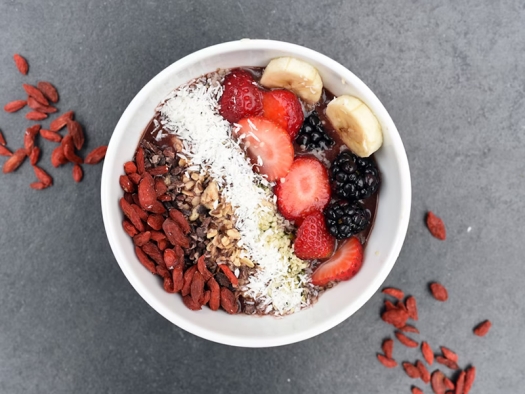NutsBerriesBowl.jpg

Photo by Sambazon / Unsplash
Food Reactions
Are you wondering if foods might be triggering you ? Lots of people get this confused, but do you know how many different types of food reactions there are?
There are four:
- Food allergies trigger an immune reaction that can be life-threatening.
- Food sensitivities trigger more gradual reactions that can be harder to recognize.
- Food intolerances occur because of an inability to digest certain foods (like lactose).
- Celiac disease is an autoimmune reaction to gluten.
Of all the types, food sensitivities are the most confusing.
Signs
Could food sensitivities be to blame? Here’s what people think food sensitivities look like:
- GI Distress
- Stomach Pain
- Loose Stools
Here’s what food sensitivities actually look like:
- Tiredness
- Brain Fog
- Joint Aches
- Feeling Bloated
- Skin Rashes
- Behavior Changes
- Moodiness
Truth is, food sensitivities can show up as any of those things. The reactions can take hours or days to show up, making it tricky to pinpoint a cause.
Testing
You aren’t going to like this, but TRUTH IS, there is no perfect way to test for food sensitivities. (I’m not talking about food allergies.)
Here are your options:
- The Elimination-Challenge Diet
- Food Sensitivities Blood Test
- Combination of both
For the Elimination-Challenge Diet, you remove all suspected foods until you feel better and then reintroduce them one at a time to see which are problematic. Some people notice dramatic results.
But some people just get more frustrated because the diet can take a long time, and the results are not always obvious. The blood test looks to see if your body is creating antibodies to a long list of foods. Combine these two methods together, and you might discover a simple solution to feeling better!
Root Cause
Let’s figure out why! If you’re dealing with food sensitivities, this post is for you.
Did you know there might be fixable issues that are driving food sensitivities or making them worse?
That’s right. Research has linked food sensitivities to changes in:
- Gut Microbiome
- Intestinal Permeability (“Leaky Gut”)
- Gut inflammation
So… gut support makes a lot of sense. Check out articles on our website relating to Gut Health to learn more.
Holistic Health Tips
Food Sensitivities
If you deal with food sensitivities, READ THIS: Just because you react to a food now does not mean you will never be able to eat that food again. You read that right.
Some people are able to optimize their gut and immune health and then happily eat foods that used to trigger them, without a problem.
To be clear: I am talking about food sensitivities and NOT true food allergies here.
Here are some ways to support your digestion and immune system to help calm reactivity:
- Eat an “anti-inflammatory” diet, meaning whole foods that are rich in antioxidants
- Support the gut microbiome with probiotic-rich foods
- Chew your foods thoroughly and eat mindfully
This is only a tiny glimpse of all the things that support people with food sensitivities because the solution is highly individual.
Food Swaps
The top two food sensitivities seem to be: gluten (wheat) and dairy (milk).
These are also extremely common foods! So here are some of my top recommended food swaps.
For Gluten:
- Sandwich → Lettuce Wrap
- Wheat Tortilla → Corn Tortilla
- Pasta → Spaghetti Squash
- PLUS most items are available in a gluten-free option (pasta, bread, pancake mix, etc.)
For Dairy:
- Milk → Almond or Oat Milk
- Creamer → Coconut Milk
- Butter → Olive Oil or Coconut Oil
- Parmesan → Nutritional Yeast
- PLUS you can find dairy-free cheese, yogurt, and ice cream!
Anti-inflammatory Diet
Ever heard of the “Anti-Inflammatory Diet”? So many of the most common health issues we face today have been linked with the same thing:
Chronic inflammation. So how do we fight it? One way is with food.
Some foods have been shown to worsen inflammation:
- Sugar
- Refined carbohydrates
- Fried foods
- Trans fats (like margarine)
While some have been shown to combat it:
- Fish (rich in omega-3s)
- Nuts & seeds
- Green leafy vegetables
- Colorful berries
Mindful Eating
Here’s why you should learn mindful eating. Did you know that it’s possible to support your digestion, lose weight more easily, stop eating when full, and enjoy your food more just by mindful eating?
I’m not saying it’s easy (it will take some practice), but here are some tips:
- Block off plenty of time to eat when you won’t be distracted (at least 20 minutes)
- Set your phone aside and turn off notifications
- Take small bites, chew thoroughly, and focus on enjoying the food
- Check in with yourself to notice when you feel full
Sometimes we get caught up in the latest trends and flashy ways to improve our health, but focusing on the basics is often even more powerful.
References
Caminero A, Meisel M, Jabri B, Verdu EF. Mechanisms by which gut microorganisms influence food sensitivities. Nat Rev Gastroenterol Hepatol. 2019;16(1):7-18.
Ohtsuka Y. Food intolerance and mucosal inflammation. Pediatr Int. 2015;57(1):22-29.
Ventura MT, Polimeno L, Amoruso AC, et al. Intestinal permeability in patients with adverse reactions to food. Dig Liver Dis. 2006;38(10):732-736.
Revised by Joanne Quinn, PhD; content provided by Wellnesswriter.com.

